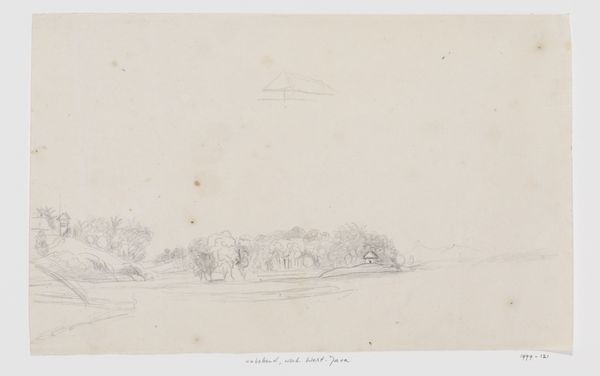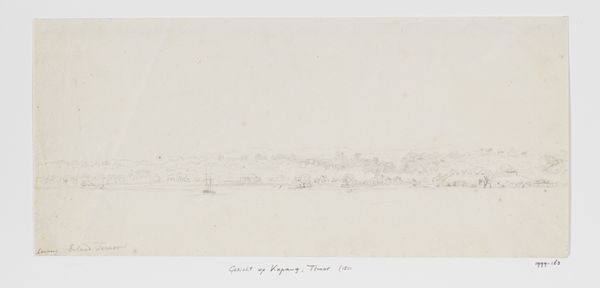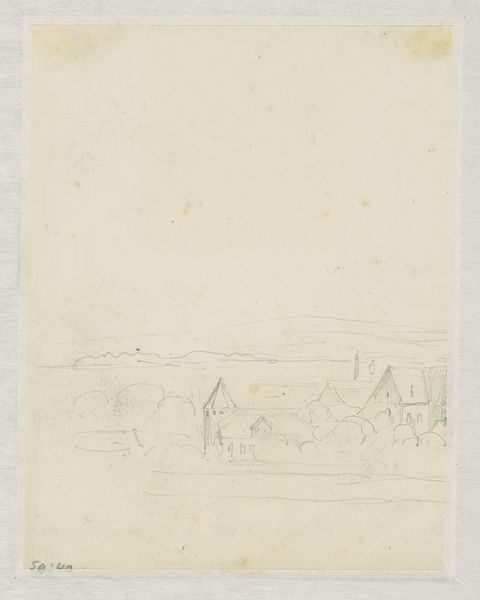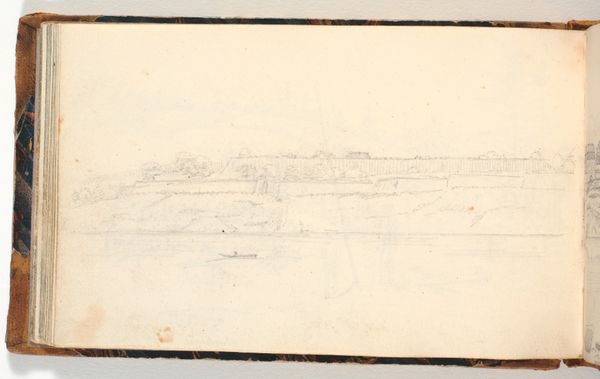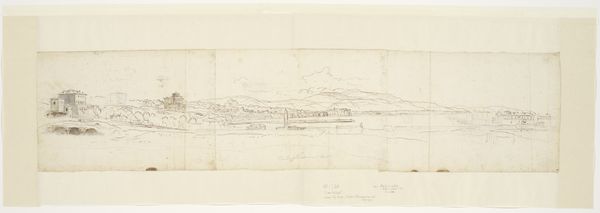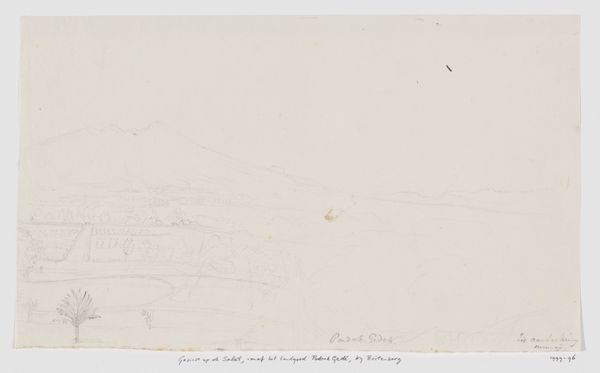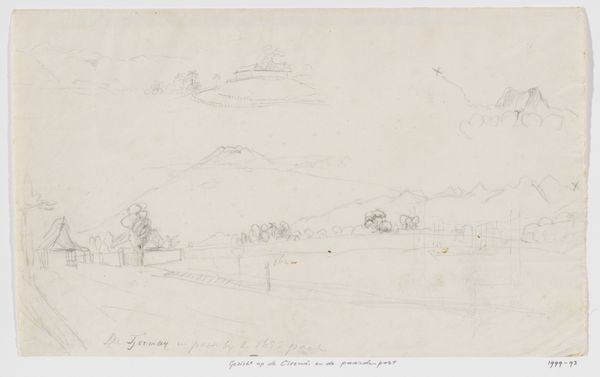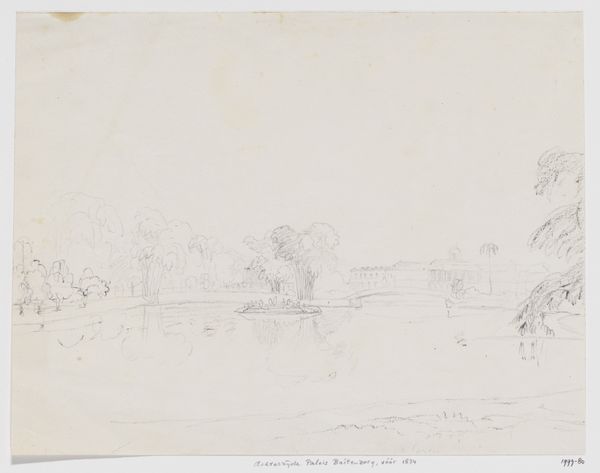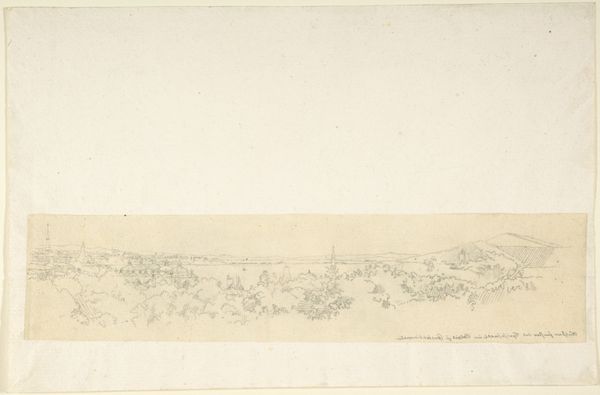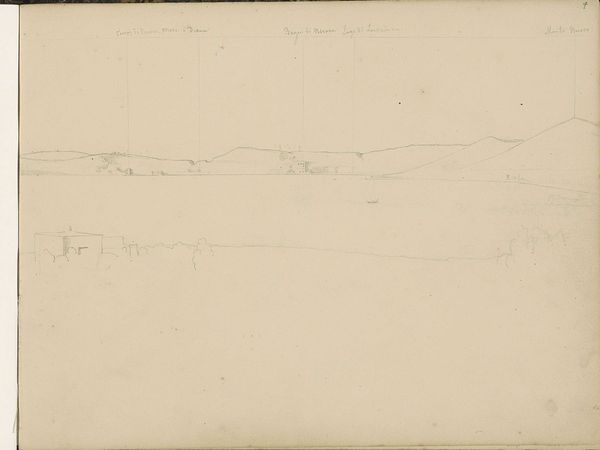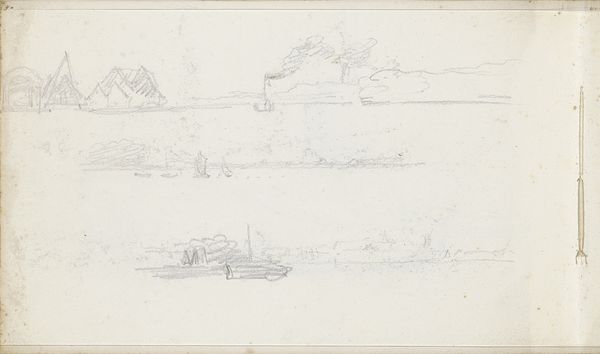
Gezicht op het eiland Gorom (of Gorong), Centraal-Molukken 1824
0:00
0:00
adrianusjohannesbik
Rijksmuseum
drawing, pencil
#
drawing
#
landscape
#
pencil
#
realism
Dimensions: height 172 mm, width 316 mm
Copyright: Rijks Museum: Open Domain
Curator: Here we have a drawing by Adrianus Johannes Bik titled "Gezicht op het eiland Gorom (of Gorong), Centraal-Molukken," made in 1824. Editor: My first impression is of a dreamscape. The delicate pencil work creates a hazy, almost ethereal atmosphere. What medium did the artist use? Curator: Bik rendered this landscape using pencil on paper. This type of sketching was often produced during periods of European colonialism and exploration of places outside of Europe. Editor: That adds a layer, doesn't it? Knowing this wasn’t just an innocent landscape but likely part of a larger colonial project shifts how I view it. I find myself wondering about the labor and materials used, did Bik prepare his pencils himself? Curator: That’s a worthwhile consideration. During this period, many landscape images played a critical role in shaping perceptions of the locations where colonial powers exerted influence, but these sketches also were scientific studies as colonial authorities were interested in assessing natural resources. The style of Realism was used by the artist to express and achieve that intention. Editor: You’re right, the “realism” is deceptive, framing a subjective view. I’m drawn to the lower section, and the detailed notes provide us a record and help tell a richer, layered story about resource extraction, commerce, and social transformation, where everything including a drawing like this has a utility. Curator: Absolutely. These types of sketches functioned as part of the visual record of that moment, but their legacy continues to this day as museums such as the Rijksmuseum exhibit them. This display highlights the aesthetic qualities, the artistic choices and creative skills, but inevitably involves an ideological and power-laden display of history and culture. Editor: Considering the material context really forces a critical reflection. What seems like a straightforward landscape contains multitudes of layers of resource and power dynamics that continue to shape both the historical understanding and continued exploitation of lands like this. Curator: Yes, I agree that by exhibiting a work like this it inevitably promotes discussions about power structures and historical narratives in both contemporary society and the art world. Editor: It reminds us to interrogate not just what is shown, but why, how, and by whom it's shown—unraveling history’s material conditions.
Comments
No comments
Be the first to comment and join the conversation on the ultimate creative platform.
